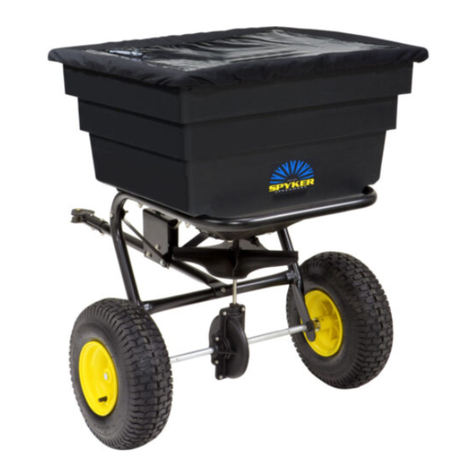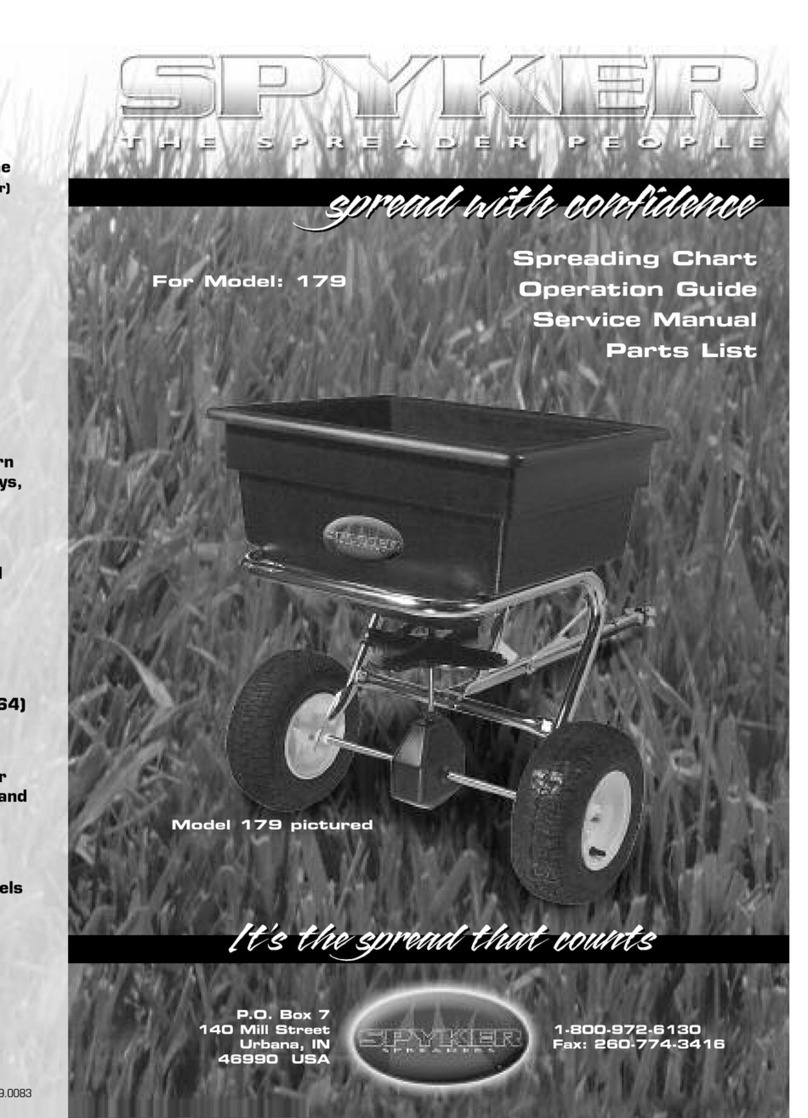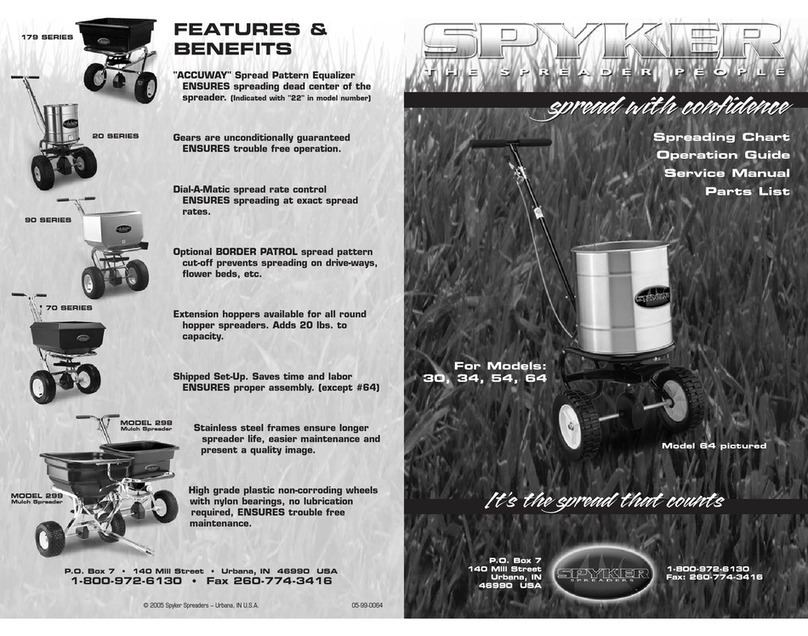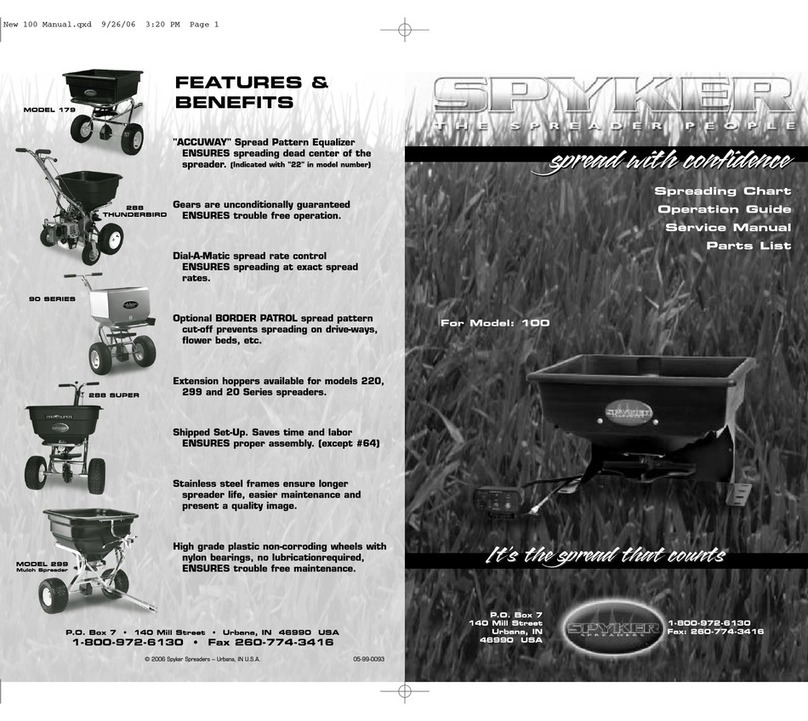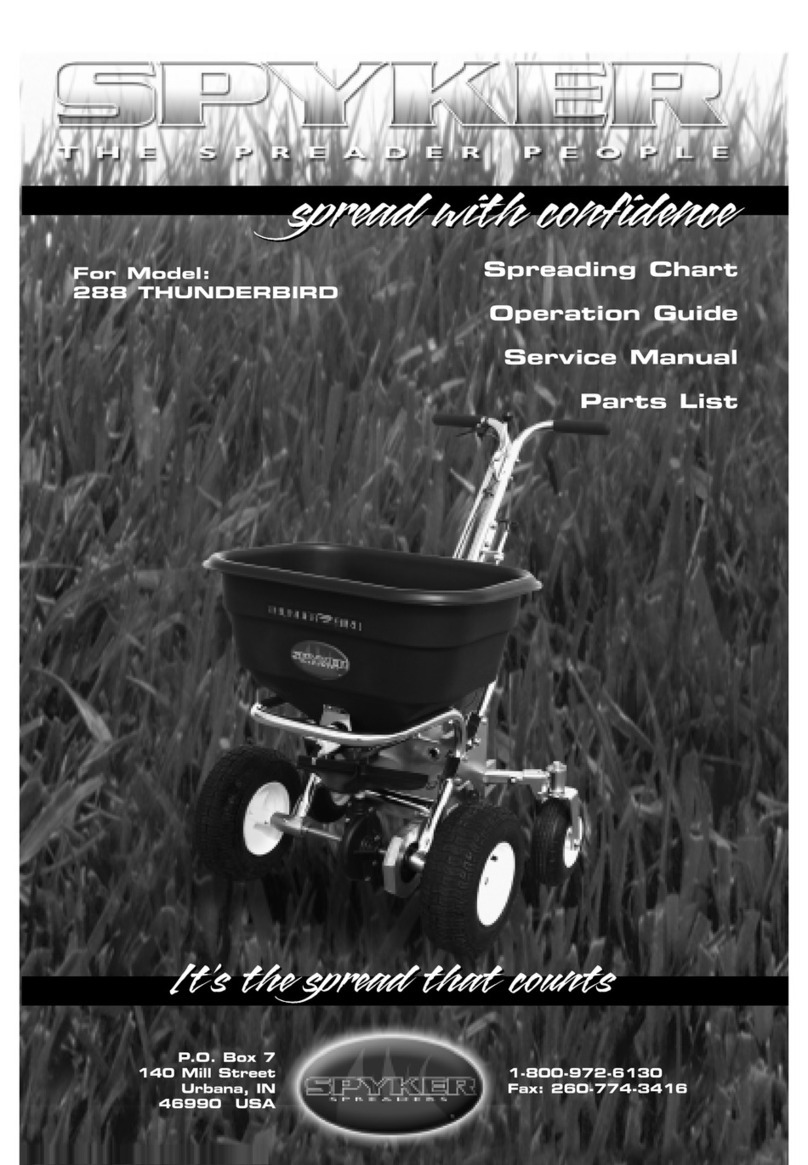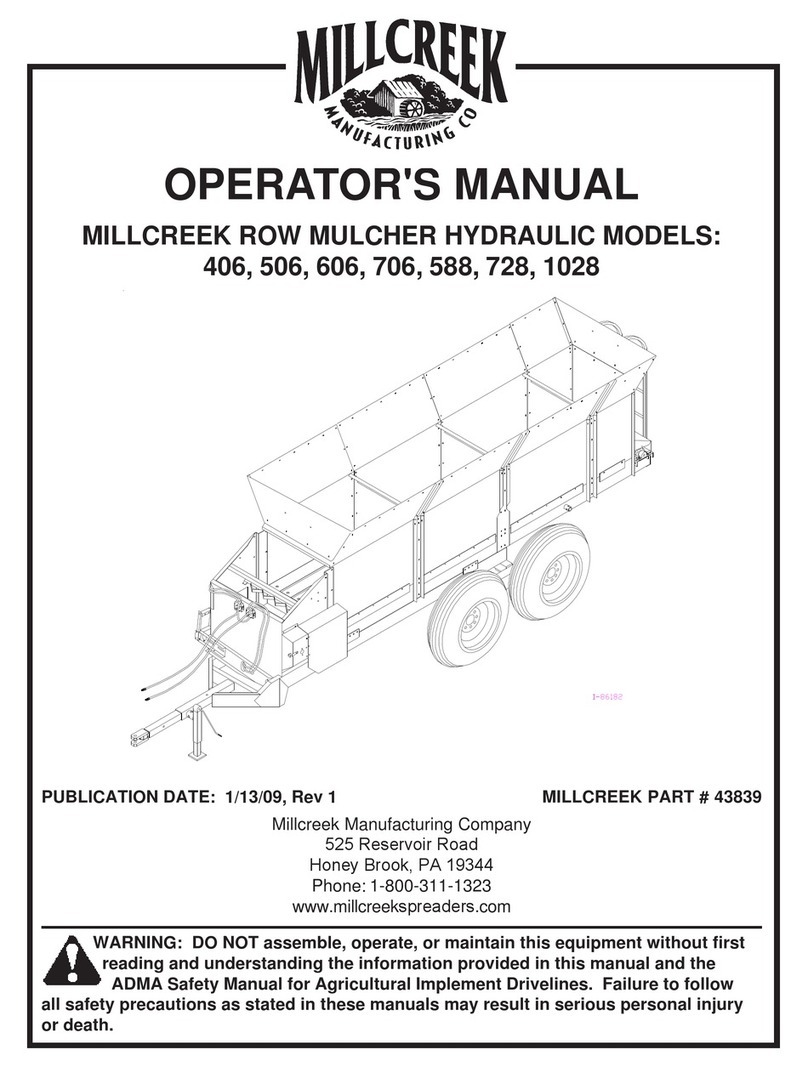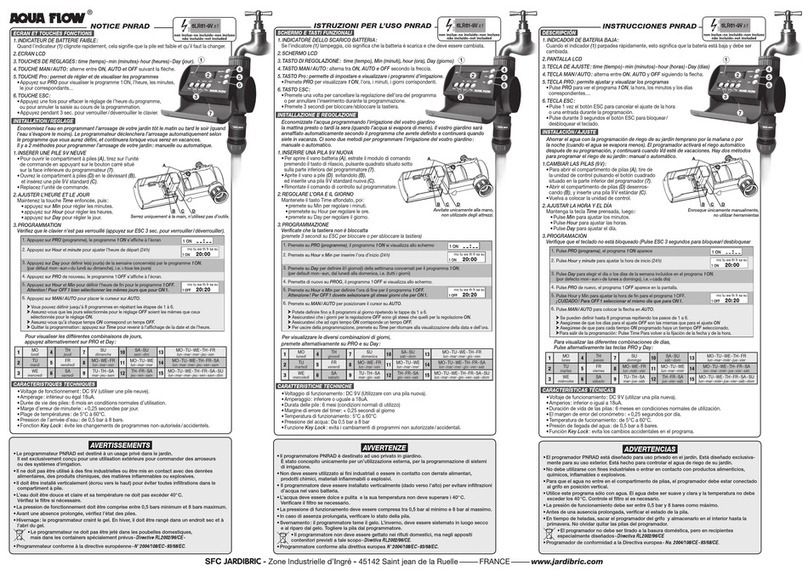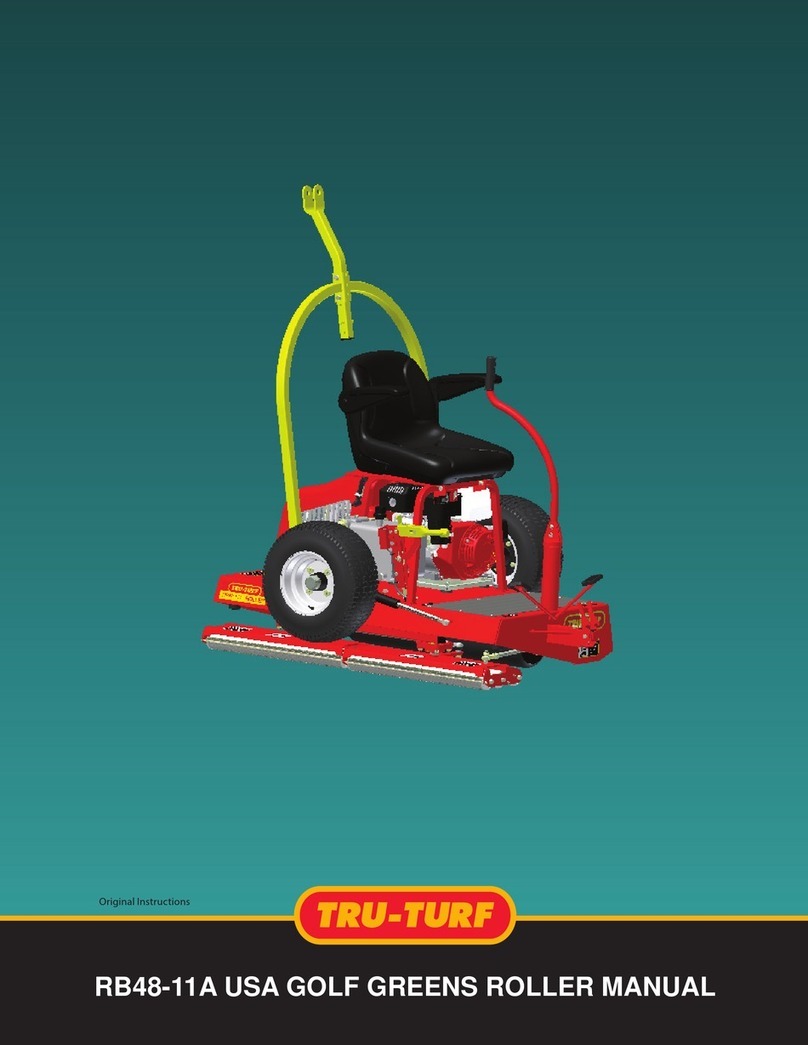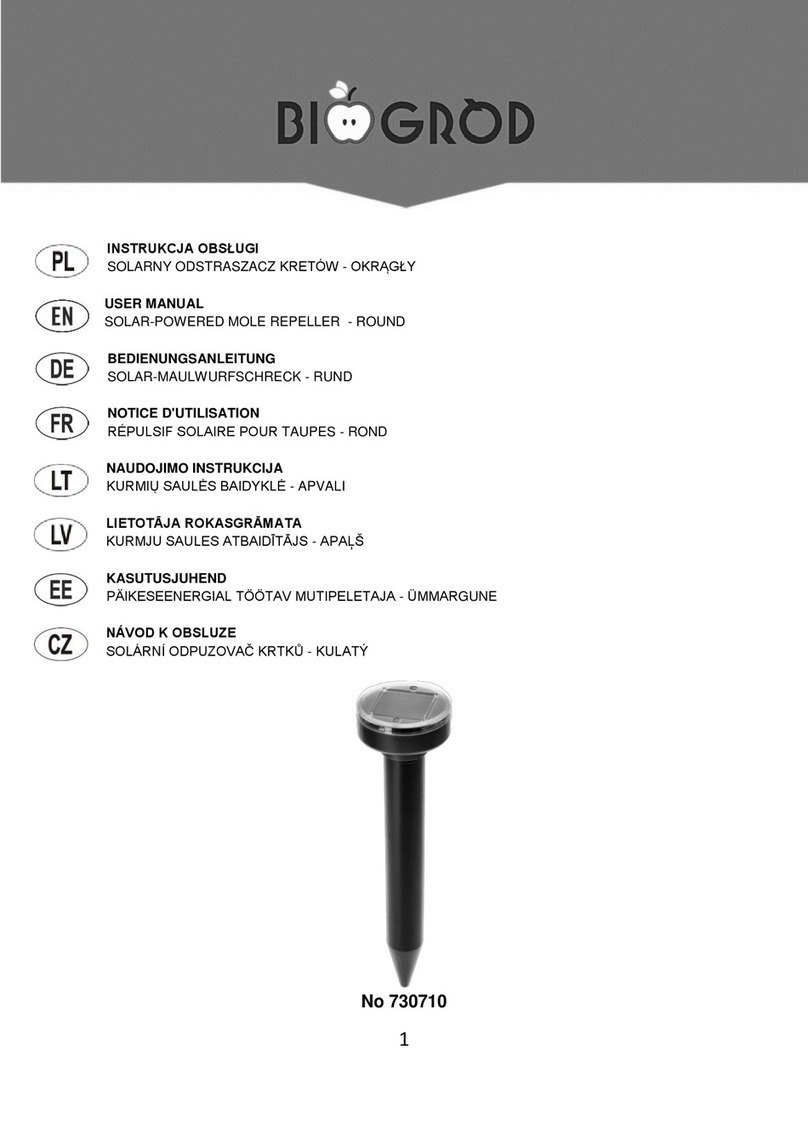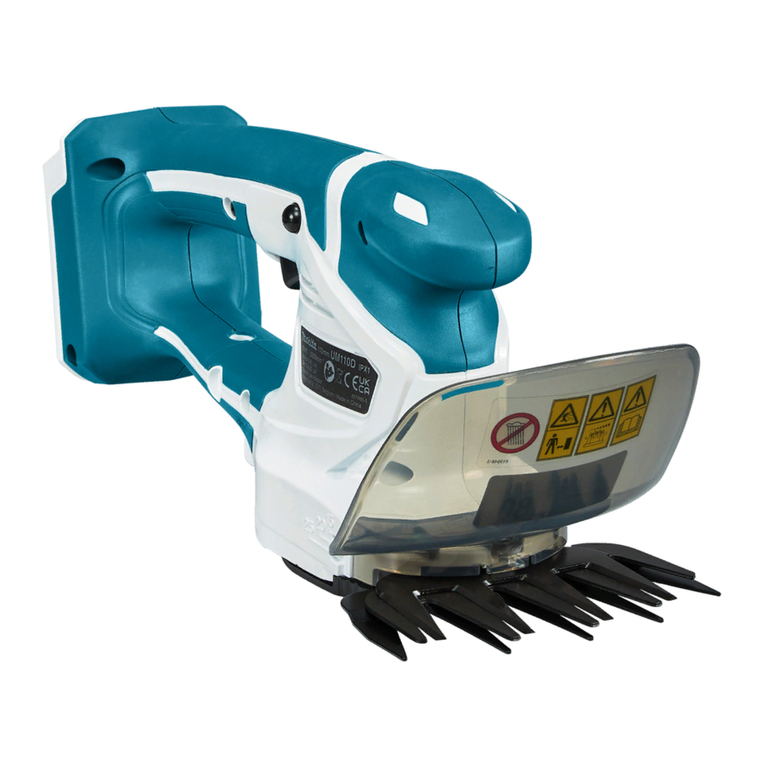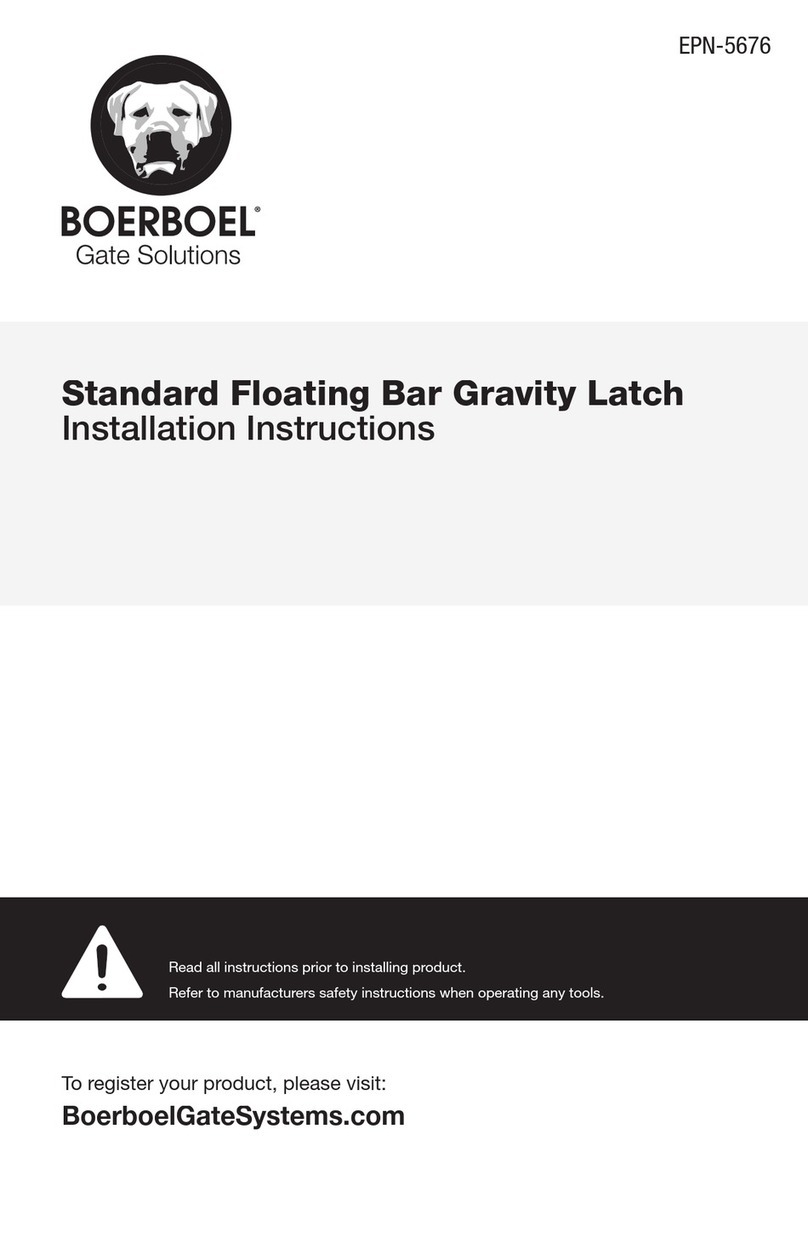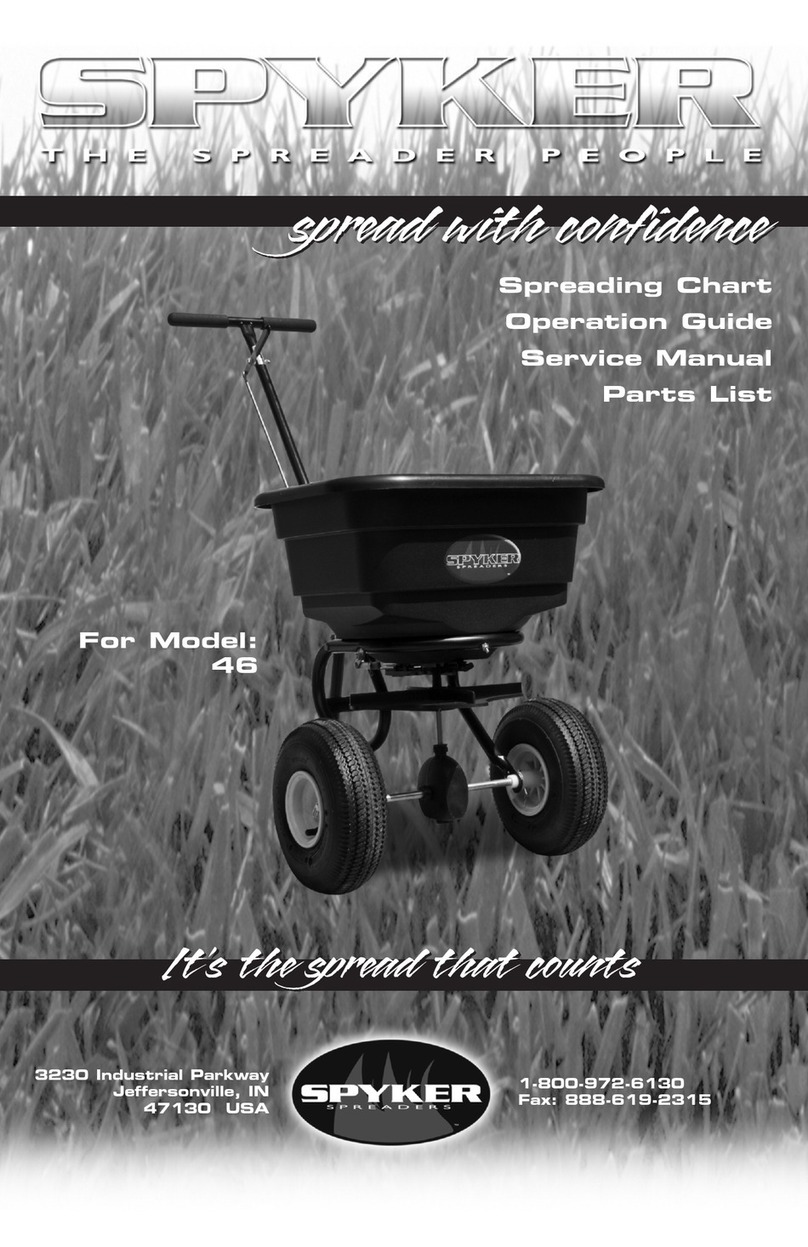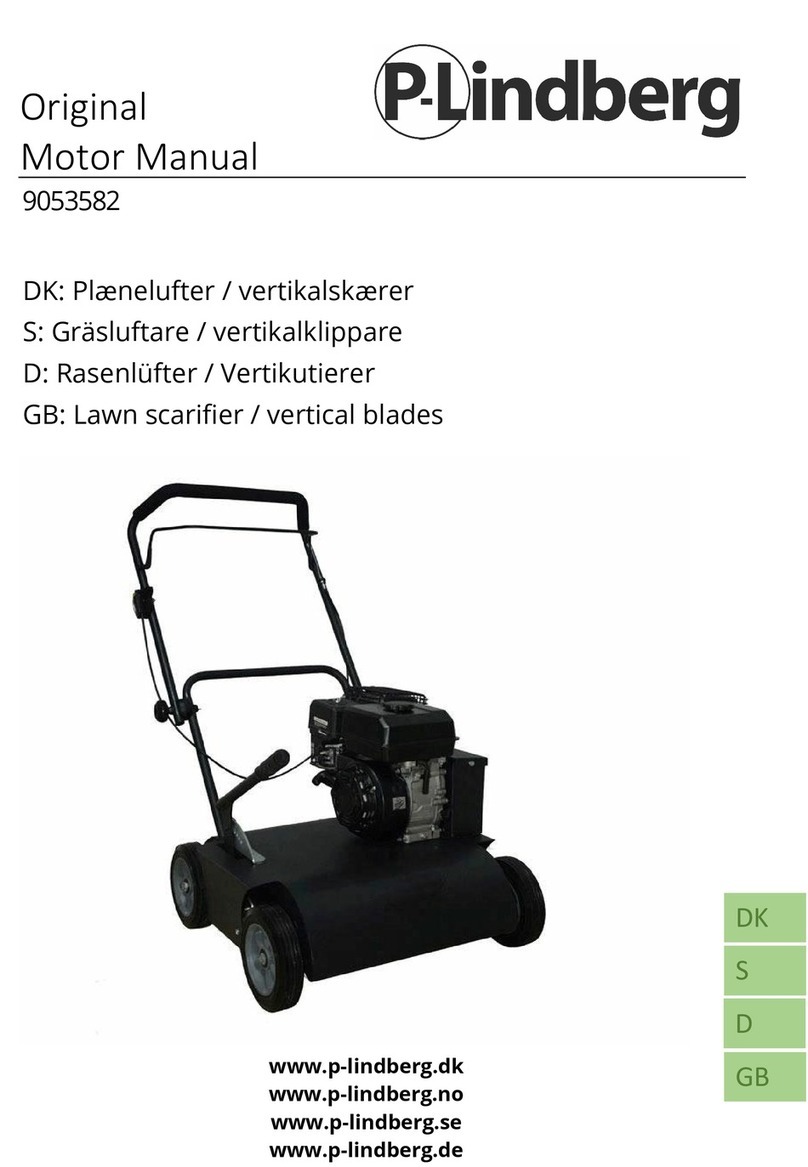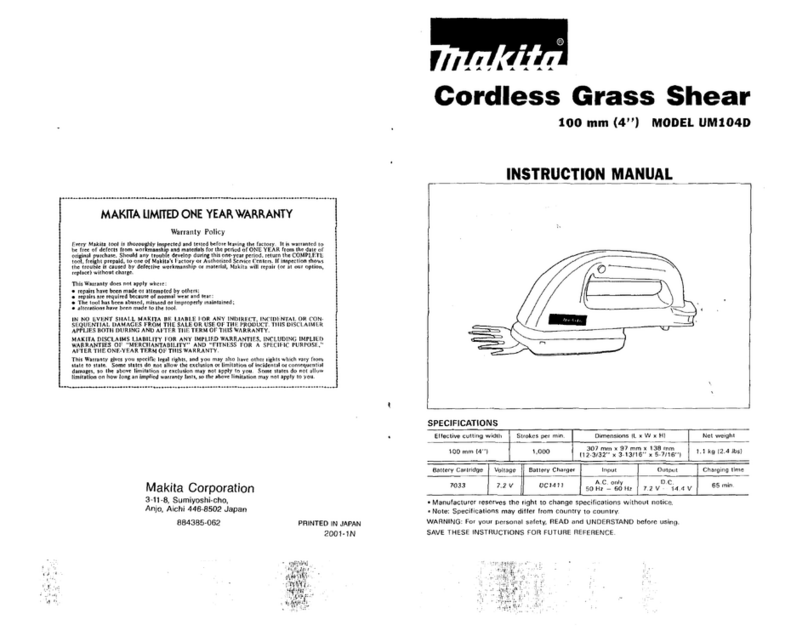10
Read Before Using
RECOMMENDATION: When not spreading and the spreader is being
pushed some distance, tip the spreader so only the idle wheel is on
the ground.
Cleaning the Spreader is Part of the Spreading Job.
IMMEDIATELY AFTER USE - CLEAN AND OIL THE SPREADER
•Method #1 - Wipe spreader thoroughly with an oily cloth. Oil all
bearings and bearing areas.
• Method #2 - Wash, rinse, and dry the spreader. Note: Drying
takes time. (Moisture trapped in bearing areas is slow to go.)
Immediately after drying - oil all bearings and moving parts. Make
certain all operations are thorough.
Note: Good “Dry Cleaning” is preferable to poor “Wet Cleaning”.
•It is virtually impossible to have rust and corrosion on a clean, dry,
oiled surface.
• Again - just before using - oil all bearings and moving parts.
• In storage, ideally the spreader should be hung by the handle. In
any case, do not pile weight on the spreader, as excess weight over
a period of time can distort the tires.
“Accuway” Use Instructions.
BALANCING THE SPREAD - A COMPLICATED PROBLEM WITH A SIMPLE SOLUTION
HERE’S THE PROBLEM - IT’S THE VARIABLES
It’s the VARIABLES. Each variable has it’s own spread pattern
characteristics.
It’s the VARIABLES. They’re transposed and mirrored in the Spread
pattern.
TRAVEL SPEED, HUMIDITY AND CONDITION OF PRODUCT ARE
MAJOR FACTORS IN BALANCING THE SPREAD
“To Every Action There Is Always An Opposed and Equal Reaction”
(Newton’s law of motion - Sir Isaac Newton, 1642-1727.)
Read Before Using
Rotary Agitator
Use the rotary agitator only if needed. Free-flowing, lump-free materi-
als will not require the agitator. The rotary agitator is easily installed or
removed. Note the clockwise rotation & sweep. Place felt washer
around spinner shaft before inserting agitator.
OIL BEARINGS AND ALL MOVING PARTS
Make certain the spreader is running freely!
Now You are Ready to Put Material in the Hopper
• Make certain the rate gate is in closed position.
• As insurance against spill damage and spill loss, put material in the
hopper with the spreader on a walk, driveway, paper, plastic, etc.
• The spreader will be easier to use if you only half-fill the hopper. Later
on you can fill the hopper if you so choose.
Now You are Ready to Spread
• Spread header strips at the ends of the area
OPPOSITE the direction of spreading. This will
provide a “turn-around” area, an area to re-
align the spreader for the return spread.
• Example is for 6 ft. wide spread: Make the
first spreading pass at one-half the spread
width from the edge of the spreading area
or in this case approximately 3 feet or one
big step.
• Additional spreading passes will be at the full
spread width or approximately 6 feet apart.
• TAKE A SIGHTING AT THE FAR END. Keep
your eye on the sighting as you spread. You
will not need to wonder where you are or
where you have been. Continue until
spreading is completed.
• Left over fertilizer can be spread under trees and other high feeding
areas without showing “edge of spread” lines.
NOTE: With the rotary agitator installed, the rate gate closed (not spreading) and with
material in the hopper, the spreader will push harder than normal. (This is because the
agitator is stirring the material and it has no place to go.)
Header
Header
6’3’6’
9

